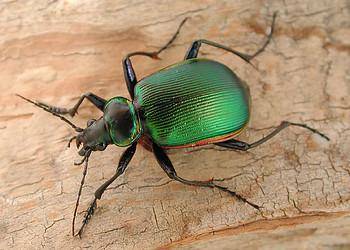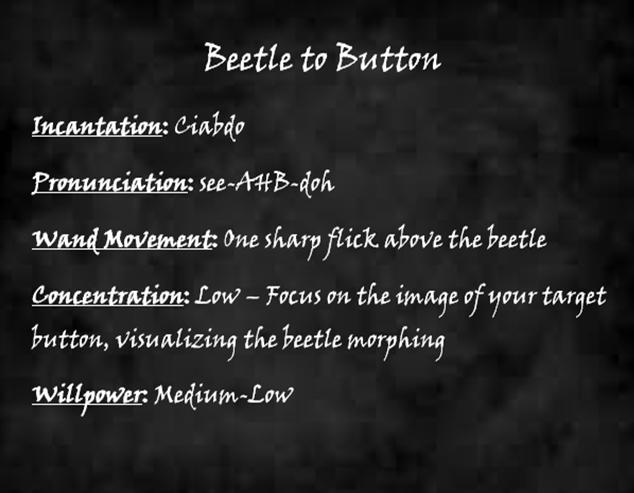Announcements
Welcome to Transfiguration!
11/25/22 - PA Applications will open January 1. Applicants should have completed all Year One assignments, including essays, and have at least an 85% in the course.
Please read the following before beginning this course or reaching out to Professor Mitchell or her PAs with questions.
1. If you have any questions about the course content, please reach out to any of the Transfiguration 201 Professor's Assistants. A list of current PAs can be found on the right side of this page. Please note that owls asking for the specific answers to quiz or essay questions will not be tolerated.
2. If you have submitted an assignment and are waiting for your grade to be returned, please do not reach out to the professor or PAs asking when it will be graded. Our grading team is composed entirely of volunteers and grading can occasionally take a little while due to both the number of assignments submitted and the real life commitments of our team. Please be patient.
3. If you believe your assignment has been graded in error, please reach out to either Professor Mitchell or Dane Lautner with the Grade ID (found in your Gradebook) for the assignment in question along with an explanation of what you believe is incorrect. Please ensure your message is respectful or your appeal will be denied.
4. If you have any comments or feedback about the course, please send an owl to Professor Mitchell.
Lesson 2) Beetles and Buttons
Welcome
Professor Mitchell stood at the front of the classroom as the Second Years filed in. On the desk beside her sat a clear plastic container with holes in the top and something moving on the inside, or, rather, a bunch of little somethings.
Introduction
I hope you are all ready to begin as today you will all be performing your first animate to inanimate transformation with the Beetle to Button Spell. It’s imperative that you keep in mind everything that we discussed last week and, as much as I’m sure some of you might not be fans of our little friends that we’re working with today, refrain from any “accidental” squishing.
Suppressing the Mind
Now, before we get into the spell, I wanted to give you all a little insight into suppressing the consciousness and the life force of the creatures we will be working with. I briefly mentioned this last week, but thought it deserved a little more explanation.
I will start by defining consciousness as the state of being awake and aware of one’s surroundings and existence. It is only in a conscious state that one can interact with, and respond to, the world around them. This includes not only active thoughts, decisions, feelings, and movements, but also subconscious instincts and reflexes. When transfiguring living beings we suppress all of these aspects by pushing our will stronger than that of the target creature’s. The important parts to note here are those instincts and reflexes that we are taking from this creature. Contained within those instincts are the creature’s natural defences and responses to danger, including the “fight-or-flight” response. This is the natural reaction that almost all living creatures have when confronted with a perceived dangerous or stressful situation. When enacted, chemicals are released in the brain that tell the animal to either flee or fight, whichever would be more beneficial to the survival of the creature in that situation. By taking away these defenses, we take responsibility for the survival of the creature in our hands.
Beetle
As I mentioned, today we will be aiming to transform a beetle into a button. Beetles are generally small, though they range in size, and are categorized as insects of the order Coleoptera. While there are many different kinds of beetles (over 400,000 species), and this spell will work on any of them, we are going to be working with ground beetles. Ground beetles are carnivorous creatures, meaning they eat meat rather than plants, and mainly feed on invertebrate prey. They can be found in almost all habitats around the globe, excluding the polar regions and in the sea.

Though much more important next year, it is still a good idea to have an understanding of the level of complexity and anatomy of the creatures we are transfiguring. Though there are nearly 40,000 species of ground beetle alone, they generally have a uniform anatomy from species to species. They have a three sectioned body consisting of a head, thorax, and abdomen, and six multi-segmented legs. All beetles also have an exoskeleton and two pairs of wings. The outer set of wings is harder and used to protect the inner set, which is mainly used for flight.
Now I’m sure you’re all tired of our senses breakdowns, so you’ll be happy to hear that this is the last one that I will be giving you. Our observations of sight, sound, taste, smell, and touch are still important to our transformations, but I trust that with all your practice last year this has become nearly second nature to you. Additionally, our target differences this year go much deeper than just what we can see or hear as one of our targets contains life and consciousness.
Sight - As mentioned, the beetle has six legs and a three part body, such that you can clearly see the divide between the head, thorax, and abdomen. It also has two antennae and its wings have a shiny, metallic appearance.
Sound - The beetle is mostly silent, though you can hear a slight buzz when it flies.
Taste - We will be omitting taste for all of our live transformations.
Smell - If the beetle feels threatened, it will release defensive secretions that are, well, not pleasing to the nose.
Touch - The wings of the beetle are ridged, so they feel slightly bumpy. When it walks across your hand, you feel a tickle from the light weight of its legs on your skin.
Button I’m assuming all of you know what a button is, so I’ll keep this description brief so that we can move into our transformation. A button is a small fastener used mainly in clothing to secure two pieces of fabric, though it has also been known to be used for decoration and ornamental purposes. There are three different types of buttons, separated by their styles of attachment. These are shank, flat or sew-through, and snap buttons. Though typically round, square buttons have also been made, and they are usually constructed of plastic, wood, metal, or shell.
I’m assuming all of you know what a button is, so I’ll keep this description brief so that we can move into our transformation. A button is a small fastener used mainly in clothing to secure two pieces of fabric, though it has also been known to be used for decoration and ornamental purposes. There are three different types of buttons, separated by their styles of attachment. These are shank, flat or sew-through, and snap buttons. Though typically round, square buttons have also been made, and they are usually constructed of plastic, wood, metal, or shell.
I will be giving you some freedom with what you want your buttons to look like this week, but in general I want you all aiming for flat or sew-through buttons.

Sight - I’m leaving the color, design, and material up to you all to pick for yourselves, but sew-through buttons typically have two or four holes in their center.
Sound - The button makes a soft click when dropped on the desk.
Taste - The taste of your button will depend on the material you choose to aim for.
Smell - The button has an undistinctive smell.
Touch - When you run a finger over the button, it is smooth to the touch, but may have raised edges.
The Transformation
Finally we get to the transformation. Once again, be sure to keep in mind everything I talked about both last week and today about the components necessary for casting transformations on living beings. Also be thinking about the ethics and the life that you are accepting responsibility for. The beetle may be small, but it is still alive.

I cannot express enough the importance of willpower in this spell and those that follow this year. While the amount needed today is still relatively low, you should all be able to feel the slightest push back from the life force of the beetle when you attempt to cast this transformation. If you fail to include enough willpower, your button may end up still having legs and the ability to crawl across the desk. As always, if you end up half-transforming your beetle, please call me over so I can reset it for you.
Where did this come from? Why do I care?
This spell was invented by a large wizard by the name of Andre Geronimo, who kept popping the buttons on his favorite vest. He usually kept an extra stash of buttons lying around just for this purpose, but one day he accidentally picked up a beetle instead of the blue button right next to it. Inspired by their similar appearance, the wizard decided to attempt to transfigure the beetle into a button so that he wouldn’t have to keep so many buttons lying around.
Like many others, this transformation is mainly used for the sake of convenience. Although one of the most simple animate to inanimate transformations, it remains a popular household spell for those last minute wardrobe malfunctions. As you can possibly imagine, it is often used in conjunction with the matchstick to needle spell, as a needle is often required to sew on a button.
From a learning standpoint, the beetle to button spell is an excellent starting point to animate to inanimate transformations as the beetle is a relatively simple creature with a smaller natural will than that which you would find in more intelligent and complex animals.
Conclusion
That is all I have for today! As much as I would love for you all to practice today’s transformation outside of class, I’m going to ask you to hold off so that we don’t wind up with any half transfigured beetles running about. Next week I will be teaching you how to fix half-transformed objects so you will be able to practice outside of the classroom. Also note that your quiz for today will cover some information from last lesson as well.
Beetle Image Credit
Button One Image Credit
Button Two Image Credit
Lesson credit to former professor Amequohi Gola
- TNFG-101
Enroll
-
Scuttlebutt Quiz
Quiz
-
Dane Lautner
Head Student
-
Claire Peters
Professor's Assistant
-
Evony Senoj
Professor's Assistant
-
Piper Clark
Professor's Assistant
-
Isobel Watford
Professor's Assistant
-
Maya
Professor's Assistant


